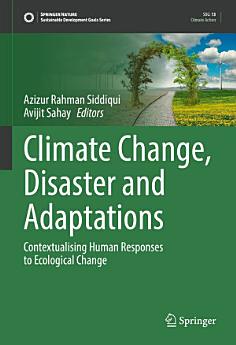Climate Change, Disaster and Adaptations: Contextualising Human Responses to Ecological Change
អំពីសៀវភៅអេឡិចត្រូនិកនេះ
អំពីអ្នកនិពន្ធ
Professor A.R. Siddiqui is Professor and Head, Department of Geography, University of Allahabad. Having finished his B.Sc, M.Sc, M.Phil &Ph.D degree from Aligarh Muslim University, Aligarh, Professor Siddiqui first joined Chaudhary Charan Singh University, Meerut in the year 1999 as lecturer and later University of Allahabad University in 2001. Prof Siddiqui has completed NNRMS training course and three international training programmes sponsored by United Nations. He has also obtained P.G. Diploma in Geo-Information Science with specialization in Geo-Hazards from IIRS, Dehradun and ITC, Netherlands. His specialization is in arid zone research, urban environment issues and application of remote sensing and GIS in land degradation studies. From 2016, he has served as the Secretary of Indian Institute of Geomorphologists (IGI). Prof Siddiqui has visited France, Russia, China, Belgium, The Netherlands, Switzerland, Italy, Austria, Greece, and Nepal for academic purposes and is a recipient of excellence award in the year 2018 by university of Allahabad.
Dr. Avijit Sahay is currently a Post-Doctoral Scholar in the Department of Humanities and Social Sciences, Indian Institute of Technology Bombay. He did his PhD on Riverbank Erosion in Majuli Island of Assam from Department of Geography, University of Allahabad, Allahabad. His works on Majuli Island have been presented in International Conferences and have been published in national and international journals. He is also the Associate Editor of the Oriental Anthropologist-an international journal of the science of man and now published by SAGE Publications.



